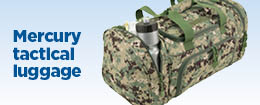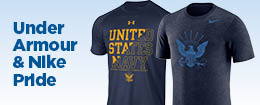- Who We Are
- Our History
- Annual Reports
- Press Releases
- Global Exchange
- Our 7 Business Lines
- NEX Retail Stores & Services
- Navy Lodge Program
- Navy Gateway Inns and Suites
- Ship Store Program
- Uniform Program Management Office
- Navy Clothing & Textile Research Facility
- Telecommunications Program Office
- CNO Professional Reading Program
- NEXTgen Scholars Program
- Trademarks
- Associate Disaster & Weather Communication
- Contact Us
- Work For Us
- Who We Are
- Our History
- Annual Reports
- Press Releases
- Global Exchange
- Our 7 Business Lines
- NEX Retail Stores & Services
- Navy Lodge Program
- Navy Gateway Inns and Suites
- Ships Store Program
- Uniform Program Management Office
- Navy Clothing & Textile Research Facility
- Telecommunications Program Office
- CNO Professional Reading Program
- NEXTgen Scholars Program
- Trademarks
- Associate Disaster & Weather Communication
- Contact us
- Work for us

Mission
The Navy Clothing and Textile Research Facility (NCTRF) in Natick, Mass., conducts testing and evaluation of all uniform items to ensure they meet or exceed Navy quality standards. Its primary mission is to develop uniforms and protective clothing worn by Navy Sailors.
Description
NCTRF’s focus is to test fabrics for fire and heat resistance, water immersion and buoyancy, heat and cold stress, ballistic protection, and uniform design and development. With an experienced staff as well as unique testing equipment and facilities, NCTRF can quickly move a concept from the drawing board to the production line. A team of textile technologists, clothing designers, physiologists and other scientific experts are all involved in conducting research, design, development, improvement and user assessment studies of protective garments and equipment. Depending upon specific needs, commercial off-the-shelf products are evaluated or unique military products are developed for use in the Navy shipboard environment. Through the Navy Uniform Certification Program, customers can be assured that uniform items meet or exceed Navy standards. NCTRF's technical teams conduct wear/fit tests, determine appropriate sizing systems for uniforms, assist store and Recruit Training Center personnel in fit and tailoring techniques, and support a continuous quality assurance program. Improving uniform styling, fit, and durability as well as upgrading materials to bring the best to customers is part of the NCTRF mission.
Building Survivability into Uniforms
Historically, uniforms have been the product of a Sailor’s environment: physically, geographically and technically. Uniforms provided protection against the elements and created distinction among specialists in a growing Navy. Foremost, however, was an element of simplicity in providing a uniform that would not interfere with the Sailor's job. Here are some of the factors that go into designing and testing military uniforms.
Material Choice
To ensure the military uniform will last, it must be resistant to tears, abrasions, water and fuel; able to withstand repeated washings; thermal insulated; moisture vapor and air permeable; and must not melt when exposed to heat.
Design and Construction
The Navy uniform is designed and manufactured with safety in mind. The long sleeves and high securable collars protect against heat and flash; the shoes and boots are non-slip, non-FOD, and have steel toes; the designs of the clothing utilize simple, tailored patterns for working in close proximity to machinery and to allow for mobility; and the seams are stitched for strength and durability.
Testing
Adequate testing of both material and finished uniform is essential to assure functionality, comfort and compatibility of shipboard uniforms. Physical testing of the material assures the key survivability characteristics are present; mannequin and controlled physiological testing assures comfort and human interface issues are addressed; and wear testing assures that the uniforms perform properly in the operating environment, aboard ship, and in the work spaces.
Quality Assurance
All Navy uniforms are subjected to a comprehensive quality assurance program to ensure that all specifications are met.



 MAIN MENU
MAIN MENU














